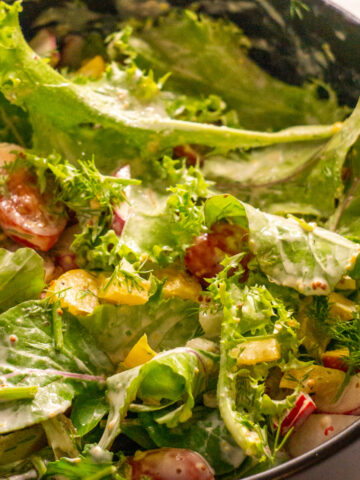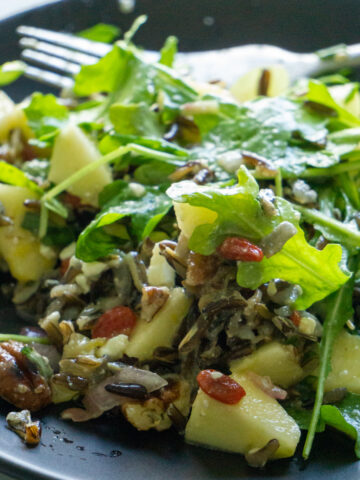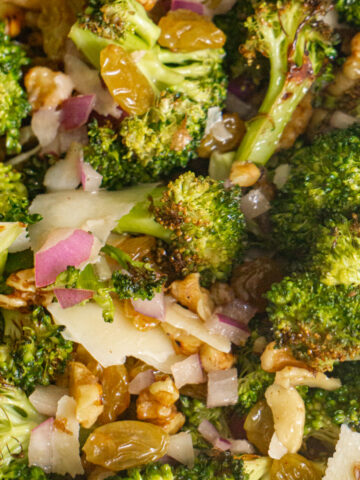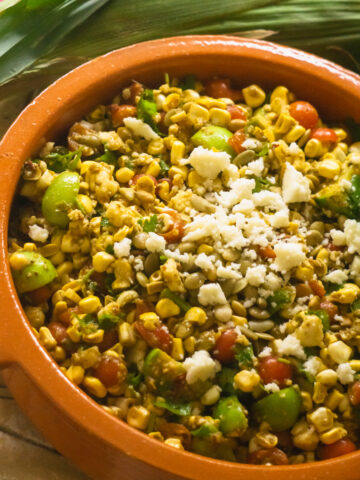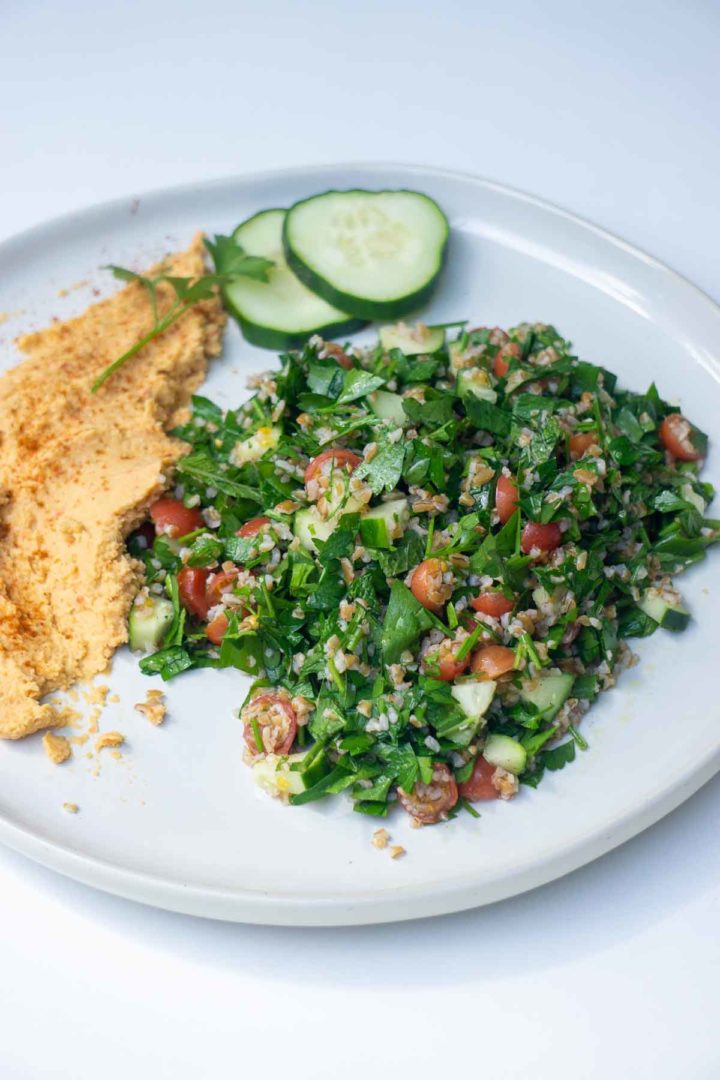
A New York Times recipe calls tabbouleh an “edible garden” and to me, that’s about right. This popular mezze has been on my radar recently as the perfect salad to scoop up the bountiful, luscious herbs that have miraculously graced my spring garden–but more on that later. This Levantine dip is the perfect accompaniment to a meal–or even a side salad in its own right.
Tabbouleh ingredients
It’s a great way to clear out a busy herb garden to say the least! Feel free to modify the amounts according to what’s on hand. You can’t go wrong with a high herb-to-bulgur ratio!
- Bulgur – I like the whole wheat kind, not the “light bulgur” or parboiled kind. To me the taste is similar, and the whole grain variety adds no extra fuss.
- Parsley – Two whole bunches are best. I used flat leaf parsley for the texture.
- Currant tomatoes, halved – My Everglades tomato bush is thriving in the high summer heat, producing hundreds of tomatoes no bigger than a dime! You might have tried this variety if you bought “currant tomatoes” at the grocery store. Otherwise, cherry tomatoes, halved or quartered, work well.
- Cucumber, diced – Regular or Persian cucumbers do the job.
- Scallions – I used four green leaves from a few scallions I planted in my back yard. About two scallions, greens and white parts, should also work.
- Mint leaves – Not to be missed! You will miss the sweetness they bring.
- Lemon dressing – I mixed olive oil, the juice of one lemon, and some allspice together and poured it on top. Allspice? Yes. I took a leaf from Bon Appétit‘s tabbouleh recipe and added allspice. Its warm flavor balanced the bitter herbs and sour lemon juice.
- Kosher salt – to taste.
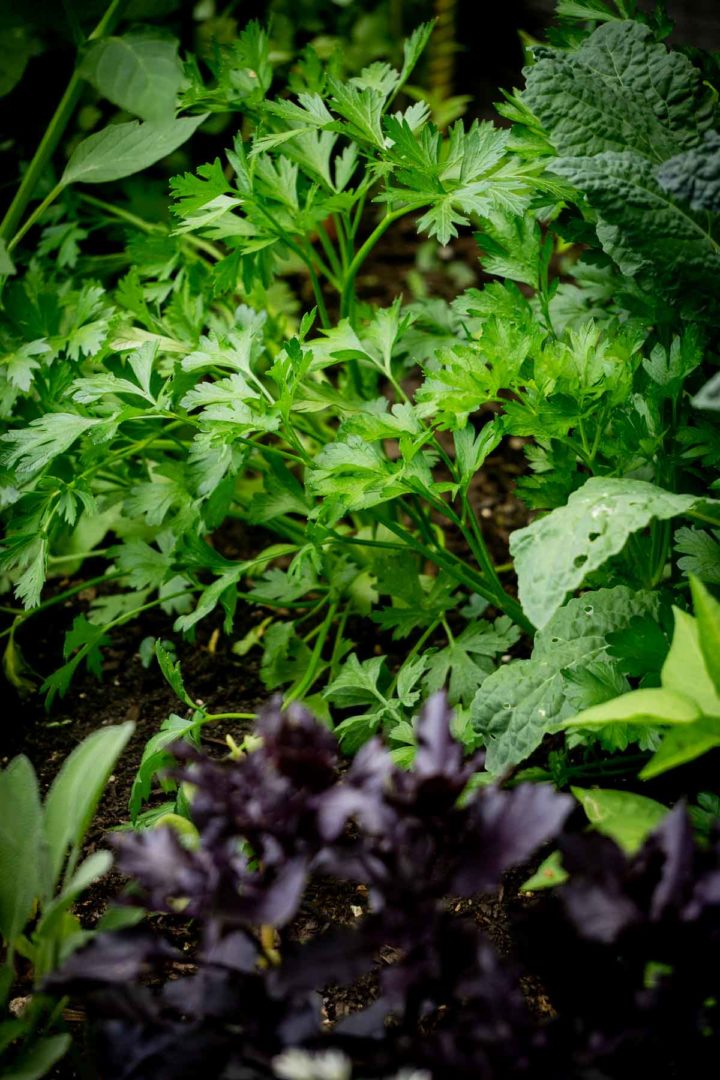
Growing parsley in subtropical weather
In case there aren’t enough reasons to grow an herb garden, allow me to explain to you the incredible taste of homegrown parsley. Instead of being uniformly bitter, like store-bought parsley, homegrown parsley mellows into sweetness and even tastes a little like anise! It might be the variety of parsley I’m growing, the climate, or even the soil–can you taste a difference in your homegrown parsley?
Here are a few Florida gardening basics I picked up along the way, but they can likely apply to other moist places in zone 9:
Start your parsley when it’s (getting) cooler.
In cooler climates, parsley grows as a biannual. That means it grows for two years: in the first year, it produces flavorful leaves, and in the second year, it produces a long taproot, turns bitter, and goes to seed. On the other hand, parsley planted in a Florida fall will go to seed by late spring. I plant mine in late winter, so I harvest the whole plant before the summer heat kicks in.
Plant parsley in rich, well-drained soil.
A loamy raised bed with all your other plants is just perfect. In my bed I used “Mel’s Mix,” which means ⅓ peat moss/coconut coir, ⅓ compost, and ⅓ vermiculite.
Plant in full sun to part shade.
Parsley loved the sun in the spring, and now that some tall cabbages are shading it in late spring, it’s happy there, too.
Water when the top inch of soil is dry.
I kinda just water every day. Parsley is drought tolerant, but it’ll wilt if it’s not well watered.
Use widely! In addition to tabbouleh, parsley is great in…
- Argentinian chimichurri
- Bathwater as a refreshing infusion
- Kitchen scrap vegetable broth
- Pesto as a substitute for basil
- Farro with mushrooms and walnut dressing
- Homemade falafel
- Lemony herb hummus
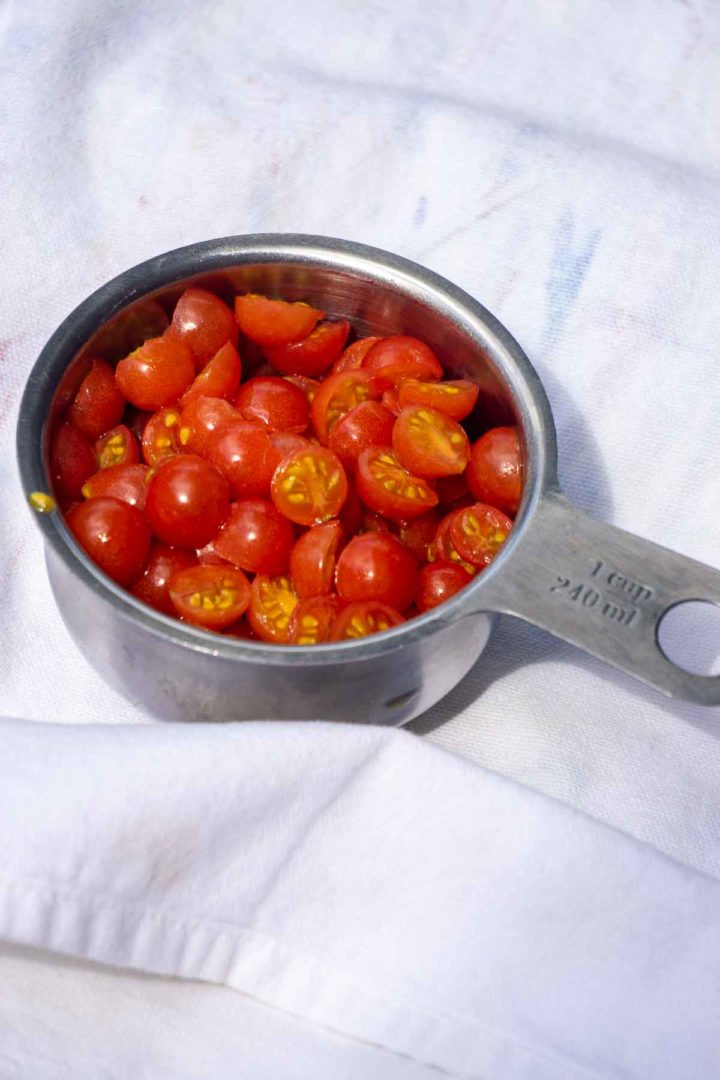
Parsley is also a great companion plant for tomatoes such as these tiny currant tomatoes!
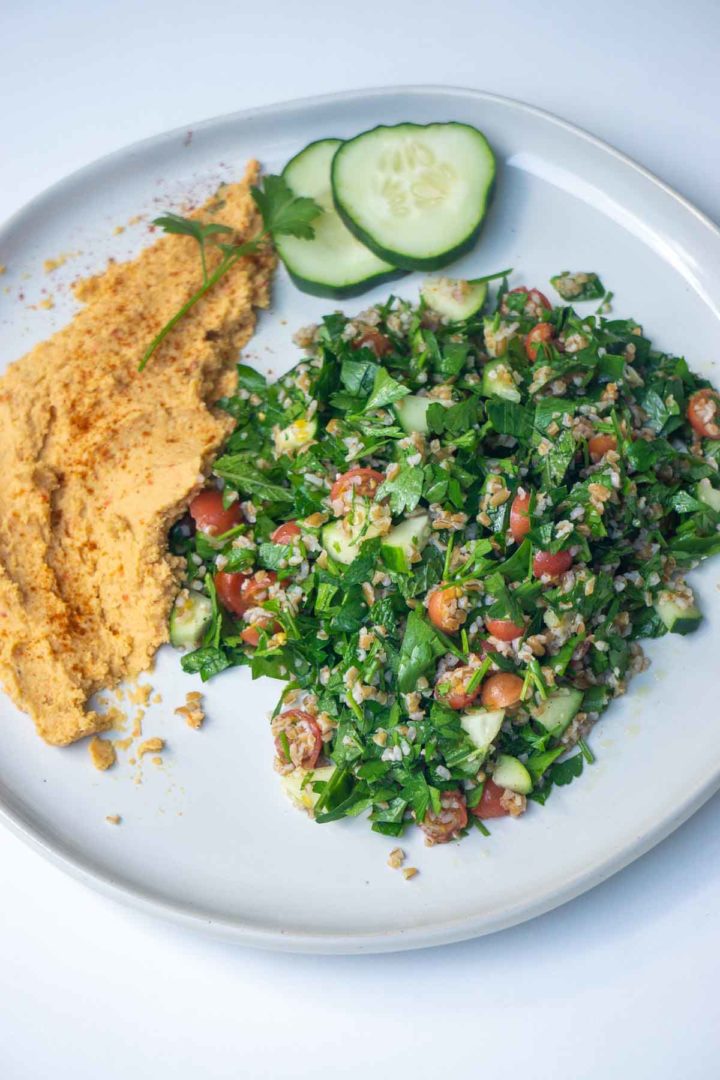
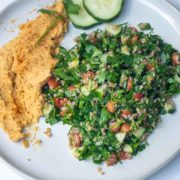
Currant Tomato Tabbouleh
- Prep Time: 20 minutes
- Total Time: 20 minutes
- Diet: Vegan
Description
A classic tabbouleh recipe filled with fresh herbs.
Ingredients
- ¼ cup whole wheat bulgur*
- 1 cup currant or cherry tomatoes, halved
- 1 cup diced cucumber*
- 2 green onions, finely chopped
- 2 bunches flat leaf parsley, leaves and small stems included
- ¼ cup mint leaves*
- ⅓ cup olive oil
- juice of 1 large lemon
- ¼ teaspoon allspice
- kosher salt to taste
Instructions
- In a small bowl, cover the bulgur with 1 inch boiling water. Let sit for 20 minutes. Strain any excess water and set aside.
- To a large bowl, add the tomatoes, cucumber, and green onions.
- Gather the mint leaves and parsley into a tight bunch. With a large, sharp knife, chop the leaves lengthwise, and then widthwise. The leaves should be coarsely chopped. Add to the tomato mixture.
- Add the bulgur and toss together. The bulgur will soak up any additional liquid created by the vegetables.
- In a small bowl, add the olive oil, lemon juice, and allspice. Whisk until blended and then mix into the salad.
- Finish with a pinch of kosher salt, or to taste, right before serving. Best eaten the same day.
Notes
Adapted from Andy Baraghani’s recipe for Bon Appétit.
Bulgur: Light bulgur also works.
Cucumbers: Persian cucumbers add the sweetest flavor.
Mint: Feel free to add more mint!
Keywords: tabbouleh, currant tomato, parsley, gardening, growing parsley, mezze, Levantine food, healthy, vegan, vegetarian, whole grain


